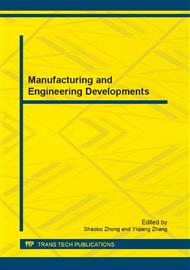p.673
p.678
p.683
p.689
p.694
p.699
p.704
p.709
p.714
Capacitance-Based Design of the Tap Water Flow Control Device
Abstract:
In this paper, a capacitance-based design of the tap water flow control device is introduced. It is designed to prevent the waste of water resources caused by the current taps. It collects the capacitance signal by means of C/F conversion module based on 555 timer. Then the switching frequency signal and the flow frequency signal are generated according to the capacitance signal collected. They will be analyzed and compared with the signal STC15F100 microcontroller stored and generating the switch commands and flow regulation instructions to control the step motor. Finally, the water flow control function is realized by the device.
Info:
Periodical:
Pages:
694-698
Citation:
Online since:
January 2013
Authors:
Keywords:
Price:
Сopyright:
© 2013 Trans Tech Publications Ltd. All Rights Reserved
Share:
Citation:


